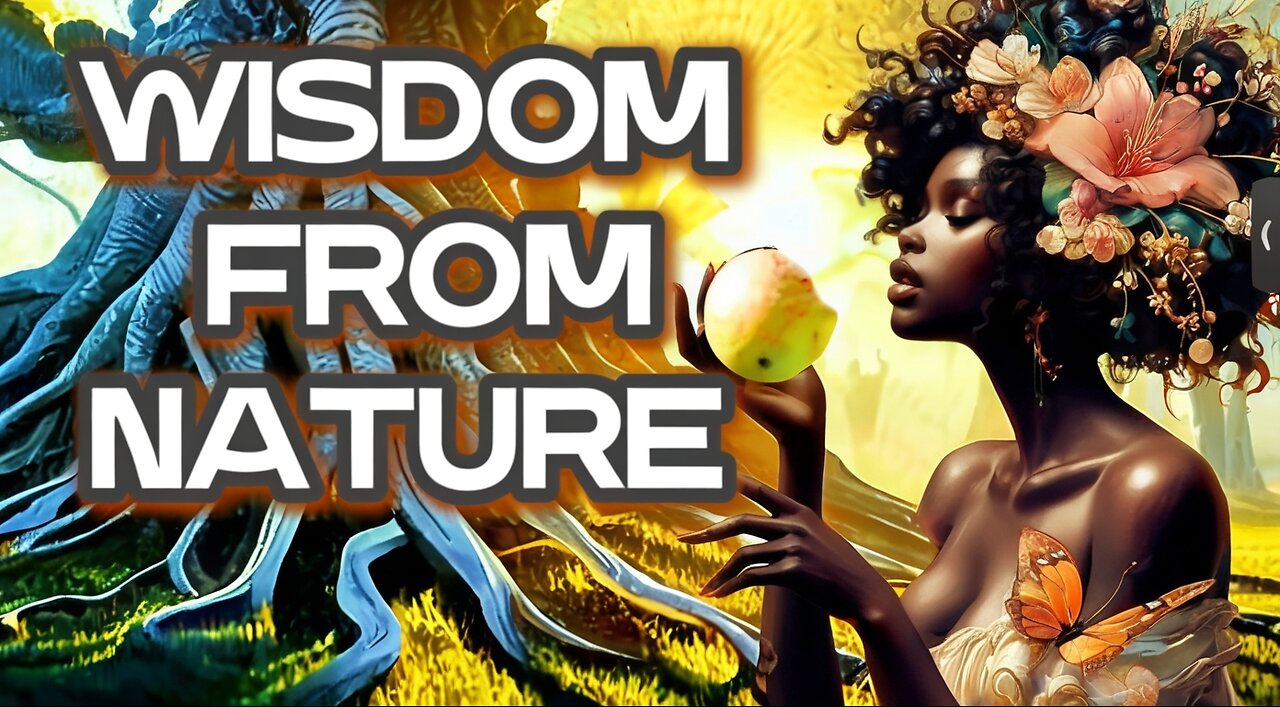Premium Only Content

Afro American Fables: Lessons on Leadership, Gratitude, and Sacrifice
The collection of fables presented explores various moral lessons through engaging narratives involving animals and natural elements. Each story delivers a profound commentary on human behaviors and characteristics, illustrating themes such as leadership, gratitude, cooperation, vanity, modesty, sacrifice, and fear. In "The Head and the Tail," a snake’s tail requests to lead, ultimately leading to misfortune that reinforces the importance of appropriate roles in collaboration, suggesting that hasty choices can lead to trouble. "The Ungrateful Stag" critiques the stag's ingratitude towards the leaves that hid him; as it eats them, they lament his fate, revealing that selfishness can blind one to the kindness shown by others. "Between Wolf and Shepherd" depicts the destructive consequences of conflict and selfishness, where both wolf and shepherd’s greed results in the unwitting sacrifice of the sheep, a metaphor for the collateral damage often incurred in disputes. In the story of "The Ass and the Rider," a little boy is saved from harm due to the ass's actions, but the rider takes credit for the ass's behavior, highlighting how often the innocent receive credit while those who take action suffer unjustly—this touches on perceptions and realities of responsibility. The "Rose Bush and the Apple Tree" further explores themes of vanity versus goodness; the rose bush, proud of her beauty, is reminded by the apple tree that true worth lies in the ability to bestow kindness and generosity, contrasting superficial beauty with innate goodness. "The Making of Eve" recounts the creation of Eve and the inherent flaws attributed to her, suggesting that despite intentions of modesty and virtue, pride and desire can lead to misguided actions. The fable warns against the dangers of perceived virtues and stresses the complexities of traits associated with femininity. "The Love of a Child" illustrates powerful maternal bonds, showcasing the instinctive sacrifices made by a mother cow for her calf, symbolizing the strength of love and attachment while emphasizing the idea that love can compel one to act against their self-interest. Finally, "The Fears of the Trees" expresses existential fear among trees regarding their fate due to human innovation; the iron, representing human ingenuity, reassures them by reminding them that they are not without their own agency. Each fable serves as a reflective mirror on human nature, advocating mindfulness towards one’s own actions and their repercussions while underscoring themes of empathy, self-awareness, and the interplay between virtue and vice. Through these narratives, readers are encouraged to discern deeper truths about relationships, both social and environmental, fostering a sense of communal responsibility and self-examination. These stories consider how conflicting interests can lead to undesirable outcomes and caution against ingratitude towards those who offer help. They resonate with the age-old struggle between appearances and underlying truths, delineating the battle between pride-based vanity and heart-based goodness. The contrasting behaviors among characters in these tales encourage digesting these archetypal morals in everyday life, promoting kindness over pride, empathy over selfishness, and cooperation over conflict. Additionally, they remind us to appreciate the foundational relationships in our lives, be they familial or social, and to acknowledge the role played by our environment in shaping our existence, ultimately advocating a balanced, harmonious life reflective of nature’s interconnectedness. Each narrative weaves valuable life lessons into our understanding of human tendencies and the complexities of interpersonal relationships, urging the reader towards a more reflective and appreciative approach to both their actions and the relationships they cultivate.
-
 LIVE
LIVE
Wendy Bell Radio
5 hours agoThe Rats Are Scrambling
12,976 watching -
 34:55
34:55
BonginoReport
3 hours agoIt's Official: We're Funding the Taliban (Ep.103) - 12/12/2024
23.9K32 -
 LIVE
LIVE
Vigilant News Network
14 hours agoMoscow Seeks REVENGE After Ukraine Strikes Russia With US Missiles | The Daily Dose
674 watching -
 UPCOMING
UPCOMING
2 MIKES LIVE
59 minutes agoThe Mike Schwartz Show 12-12-2024 w Dr. Michael J Schwartz
27 -
 6:35
6:35
China Uncensored
12 hours agoEconomic EXPERT Reveals the Surprising Truth About China's Economy
1.87K2 -
 1:17:55
1:17:55
Game On!
13 hours ago $6.11 earnedThursday Night Football NFL Week 14 Rams at 49ers!
44.5K4 -
 6:46
6:46
Dr. Nick Zyrowski
1 day agoWhat Happens If You Drink Lemon Water for 14 Days?
25.4K4 -
 12:25
12:25
IsaacButterfield
1 day ago $6.98 earnedGEN Z SHOULD BE ASHAMED!
17.2K4 -
 5:13
5:13
BIG NEM
13 hours agoIs AI Coming for Comedians Too?
12.8K2 -
 28:29
28:29
Goose Pimples
1 day ago7 SCARY Videos That’ll Make Your Knees Wobble
83.8K7